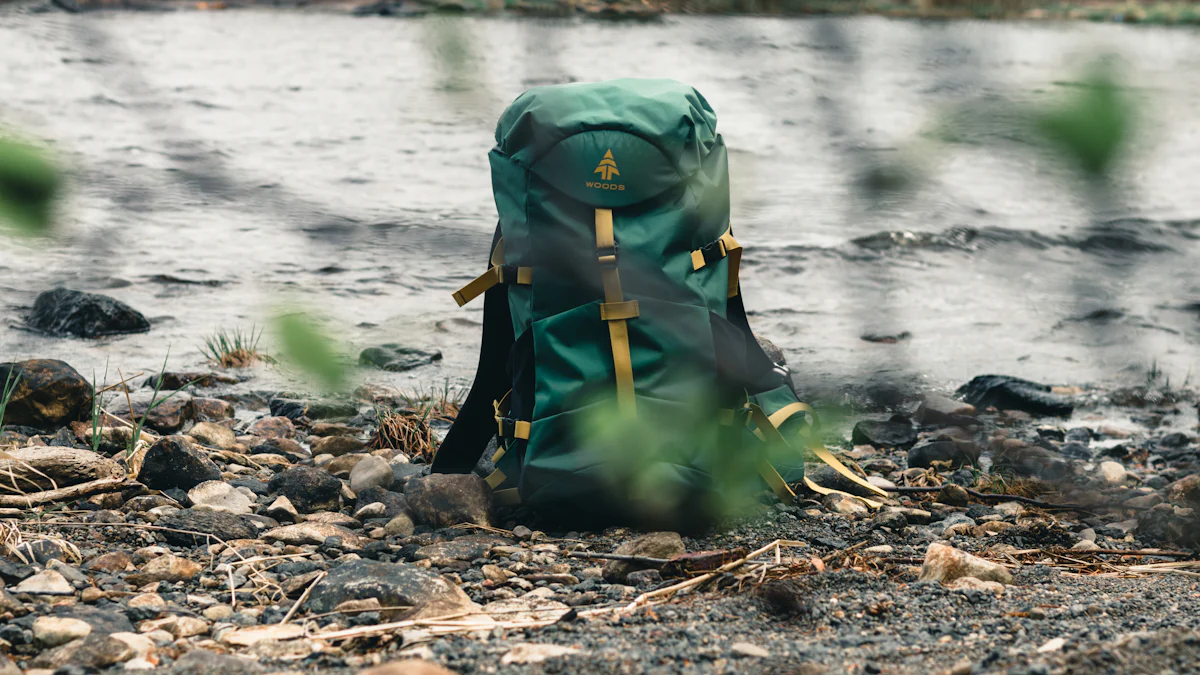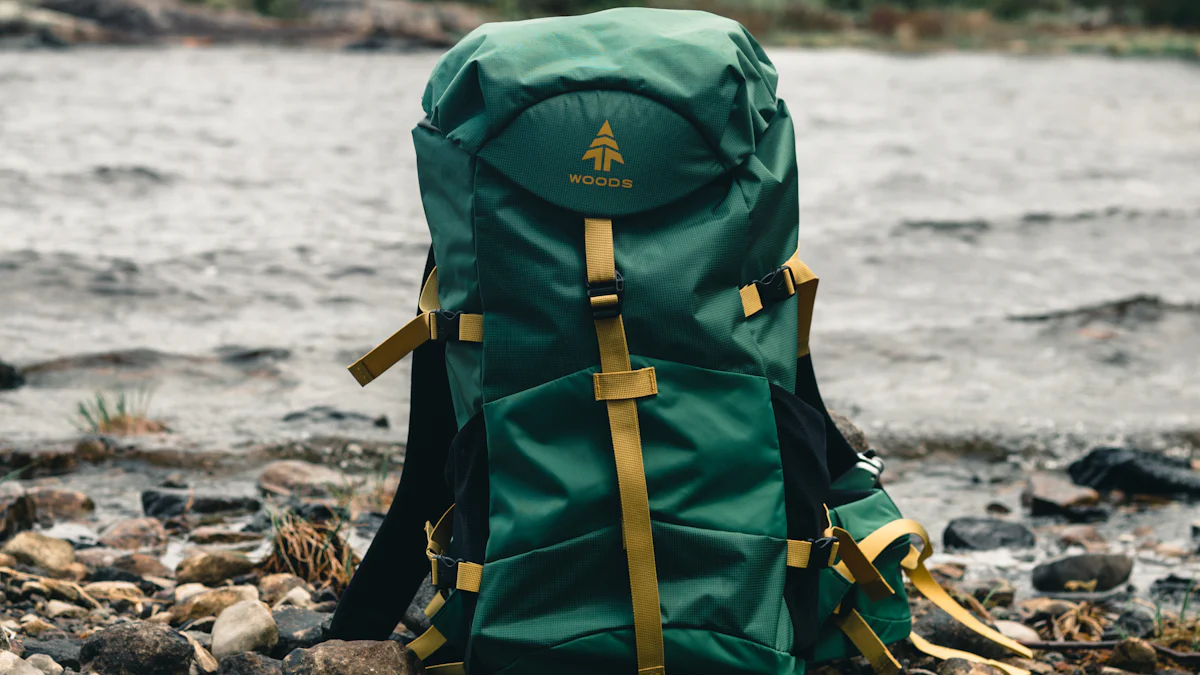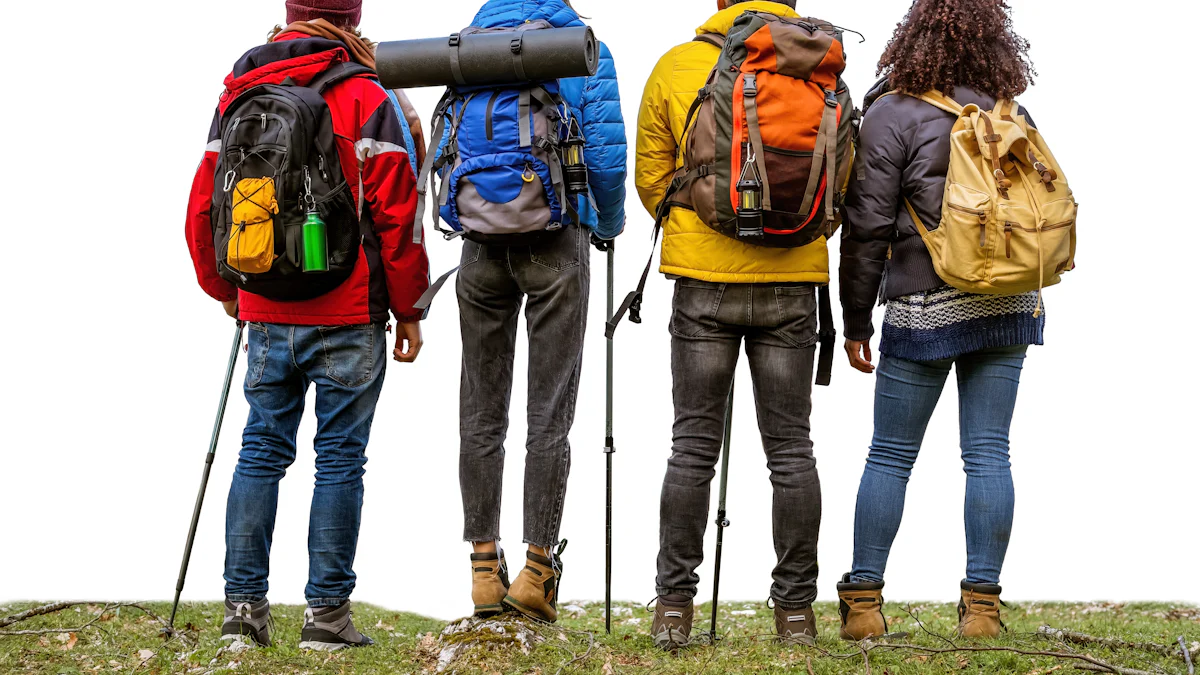Essential Advice for Starting an Outdoor Gear Business

Have you noticed how more people are heading outdoors these days? Hiking has become the top outdoor activity in the U.S., with 20% of people participating in 2023. Fishing isn’t far behind, with over 18% of Americans casting their lines. National parks are also buzzing, drawing over 92 million visitors last year. This surge in outdoor adventures has fueled a booming demand for outdoor gear. With the market expected to grow from $70.22 billion in 2023 to $129.10 billion by 2032, starting an outdoor gear business now could be your ticket to success.
Key Takeaways
The outdoor gear market is growing fast. It may increase from $70.22 billion in 2023 to $129.10 billion by 2032. This is a great time to start your business.
Think about the environment. People want eco-friendly products. Use green practices to connect with them.
Know your customers. Study their age, habits, and interests. This helps you make better products and ads.
Build a strong online presence. Make a simple website and stay active on social media. This will bring in and keep customers.
Give great customer service. Easy returns and personal touches build trust. This makes people come back to buy again.
Understanding the Outdoor Gear Industry

Key Market Trends
Growth in outdoor activities and eco-conscious consumers
Outdoor activities are booming, and so is the demand for sustainable products. More people are hiking, camping, and exploring nature, which has led to a shift in consumer behavior. Did you know that 81% of consumers expect companies to actively improve the environment? This means sustainability isn’t just a trend—it’s a necessity. Brands like Patagonia have set the standard, with 54% of their customers seeking fair-trade products. Millennials, in particular, prefer companies that prioritize eco-friendly practices. If you’re starting an outdoor gear business, focusing on sustainability can help you connect with this growing audience.
Popular product categories in outdoor gear
The outdoor gear market is diverse, but some categories stand out.
Equipment: This category dominates with a 50.5% market share. Items like tents and backpacks are in high demand, especially as camping and hiking grow in popularity.
Apparel: Adventure sports have driven apparel to account for 36% of the market. Think waterproof jackets and thermal wear.
Accessories: Products like water purifiers and gloves make up 13.2% of the market. Outdoor fitness trends and gym memberships are fueling this growth.
Challenges in the Outdoor Gear Business
High competition and pricing pressures
The outdoor gear market is competitive. New businesses face challenges like finding customers and standing out. Established brands manage pricing pressures by streamlining production and focusing on brand loyalty. Effective inventory management also helps them control costs and reduce waste. You’ll need to adopt similar strategies to stay profitable.
Balancing quality and affordability
Consumers want durable, high-quality gear, but they also expect reasonable prices. Striking this balance can be tough. Focus on innovative designs and efficient production processes to meet customer expectations without breaking the bank.
Conducting Market Research
Identifying target customers and their needs
Understanding your audience is key. Use segmentation techniques to identify your target customers:
Demographic: Age, gender, and income level.
Behavioral: Buying habits and product usage.
Psychographic: Lifestyles and values.
Geographic: Location-based preferences.
Needs-Based: Specific pain points.
Value-Based: Shared beliefs and priorities.
Analyzing competitors and market gaps
To succeed, you need to know what your competitors are doing. Use tools like CX software to analyze customer feedback and identify gaps in the market. Focus on high-value keywords to optimize your marketing strategy and predict trends. This approach will help you carve out a niche in the crowded outdoor gear industry.
Building a Strong Foundation for Your Outdoor Gear Business
Developing a Business Plan
Defining your mission, vision, and goals
Every successful outdoor gear business starts with a clear mission and vision. Ask yourself: What do you want your brand to stand for? Maybe you’re passionate about sustainability or creating gear for extreme adventurers. Define your goals too. Whether it’s reaching $1 million in sales or becoming a leader in eco-friendly outdoor gear, having a roadmap keeps you focused.
Outlining your product offerings and target market
Your business plan should detail your product lineup and who you’re selling to. Will you focus on lightweight hiking gear or stylish outdoor apparel? Research your target market to understand their preferences. For example:
Millennials and Gen Z value sustainability and style.
Families might prioritize affordability and durability.
By aligning your products with customer needs, you’ll carve out a niche in the competitive outdoor gear market.
Designing and Sourcing Outdoor Gear
Creating innovative and durable designs
Modern consumers expect outdoor gear to be both functional and trendy. Innovations like 3D-printed bike saddles or solar-powered lanterns are game-changers. Check out this table for inspiration:
Innovation Type | Description |
|---|---|
Digitally Printed Gear | Includes bike saddles, shoe midsoles, and backpack details using 3D printing. |
Off-Roading Electric Bikes | Electric bikes designed for off-road use, enhancing outdoor mobility. |
Functional Solar Lanterns | Lanterns powered by solar energy for convenience in outdoor settings. |
Garmin Water Activity Watch | A watch designed specifically for water-related activities. |
Finding reliable suppliers and manufacturers
Reliable suppliers are key to producing high-quality gear. Evaluate them based on these criteria:
Criteria | Description |
|---|---|
Researching Manufacturers | Build relationships with reputable manufacturers and check their certifications. |
Quality Checks | Perform rigorous quality checks to ensure consistent standards. |
Local Wholesalers | Source locally for hands-on quality assessment and lower shipping costs. |
Managing Supplier Relationships | Develop strong partnerships to ensure timely and reliable deliveries. |
Attending trade shows or exploring online marketplaces can also help you find trustworthy partners.
Financial Planning for Success
Estimating startup costs and pricing strategies
Starting an outdoor gear business requires careful budgeting. Typical startup costs range from $141,000 to $585,000. Here’s a breakdown:
Startup Cost | Average Amount Range (USD) |
|---|---|
Inventory procurement and stocking | $50,000 - $250,000 |
Website development and e-commerce | $5,000 - $20,000 |
Branding, marketing, and advertising | $10,000 - $50,000 |
Permits, licenses, and certifications | $1,000 - $5,000 |
To minimize costs, negotiate with suppliers for better pricing and consider just-in-time inventory systems. For pricing, dynamic pricing strategies can boost revenue by up to 30% during peak seasons while keeping customers happy with flexible options.
Planning for profitability and scalability
Think long-term. Use data to forecast demand and optimize inventory levels. Explore financing options like small business loans to support growth. As your business scales, focus on maintaining quality and customer satisfaction. A scalable model ensures you’re ready to meet increasing demand without compromising your brand’s reputation.
Establishing an Online Presence for Your Outdoor Gear Business

Setting Up an eCommerce Store
User-friendly navigation and secure payment options
Your eCommerce store is the heart of your outdoor gear business. A user-friendly website makes it easy for customers to browse and buy. Include intuitive product search and filtering options so shoppers can quickly find what they need. A secure checkout process is equally important. Use a platform that supports encrypted payments to protect customer data and build trust.
Here’s a quick look at key features your eCommerce store should have:
Key Feature | Description |
|---|---|
Inventory management | Track and manage your outdoor gear inventory with low-stock alerts and automated ordering. |
Mobile-responsive design | Ensure your site works seamlessly on mobile devices for on-the-go shoppers. |
Intuitive product search | Help customers navigate your inventory with easy search and filtering options. |
Secure e-commerce platform | Provide a smooth and hassle-free checkout experience. |
Fast shipping and excellent customer experience
Fast shipping can set you apart in a competitive market. Partner with reliable carriers to ensure timely deliveries. Offer tracking options so customers can monitor their orders. Beyond shipping, focus on creating a seamless experience. Tools like abandoned cart savers and one-step checkout can boost conversions. A loyalty program can also encourage repeat purchases and build long-term relationships.
Leveraging Social Media
Engaging with outdoor enthusiasts on platforms like Instagram
Social media is a goldmine for connecting with outdoor enthusiasts. Platforms like Instagram let you share stunning visuals of your products in action. Post photos of hikers using your gear or videos of campers setting up your tents. Use Stories and Reels to showcase quick tips or behind-the-scenes moments. High-quality visuals and interactive content keep your audience engaged and coming back for more.
Running targeted ads and influencer collaborations
Targeted ads help you reach the right audience. Use Instagram’s ad tools to focus on outdoor lovers based on their interests and behaviors. Collaborating with influencers in the outdoor gear niche can amplify your reach. Influencers bring credibility and trust to your brand. They also create high-quality content you can repurpose for your marketing strategy. Micro-influencers, in particular, offer cost-effective ways to connect with highly engaged audiences.
Building a Strong Brand Identity
Designing a memorable logo and packaging
Your brand identity starts with a memorable logo. A well-designed logo reflects your values and makes your outdoor gear stand out. Invest in professional branding services to create cohesive visuals across your website, packaging, and social media. Expect to spend between $5,000 to $15,000 on branding, but it’s worth it for long-term recognition.
Using tools like Desygner for professional visuals
Creating professional visuals doesn’t have to be complicated. Tools like Desygner make it easy to design logos, banners, and flyers. Use these visuals to tell your brand’s story and connect with your audience. Consistency in colors, fonts, and imagery builds trust and makes your outdoor gear business instantly recognizable.
Marketing and Engaging Customers
Crafting a Marketing Strategy
Leveraging content marketing (e.g., blogs, videos)
Content marketing is a powerful way to promote your outdoor gear. By focusing on your niche, you can stand out from competitors and build a loyal audience. Start by creating engaging content that educates and inspires. For example, write blogs about hiking tips or produce videos showcasing your gear in action. Use compelling visuals to grab attention and keep your audience hooked. Social media is your best friend here. Platforms like Instagram let you connect with outdoor enthusiasts and share your story. Partnering with influencers can also help you reach a broader audience. They bring credibility and can showcase your products authentically.
Running seasonal promotions and discounts
Seasonal promotions are a smart way to boost sales and engage customers. Align your deals with peak outdoor seasons, like summer for camping gear or winter for thermal wear. These promotions not only drive sales but also help clear out old inventory to make room for new products. Customers love timely discounts, and offering them fosters loyalty. For example, a “Back-to-School Hiking Sale” can attract families preparing for fall adventures. Seasonal themes make your promotions more relatable and memorable.
Standing Out in a Competitive Market
Learning from successful outdoor gear brands
You can learn a lot from top outdoor gear brands. They excel by building strong brand identities that foster trust and loyalty. Exceptional customer service is another hallmark. Quick issue resolution keeps customers happy and coming back. Many successful brands also create unique experiences, like hosting exclusive events or launching limited-edition products. These strategies strengthen emotional connections with their audience. Rewards programs are another effective tool. Tailored incentives, like discounts or cashback, encourage repeat purchases and deepen customer engagement.
Differentiating your products and services
To stand out, focus on what makes your outdoor gear unique. Build a brand identity that resonates with your audience. Consistent visuals, clear messaging, and a distinct voice help customers recognize and trust your brand. Exceptional customer service also sets you apart. Offer personalized support and proactive communication to enhance satisfaction. Hosting exclusive events or introducing limited-edition gear can create buzz and attract attention. Building a community around your brand through social media or local initiatives fosters a sense of belonging and loyalty.
Delivering Excellent Customer Service
Offering hassle-free returns and warranties
Great customer service starts with hassle-free returns and warranties. Customers want peace of mind when buying outdoor gear. Make your return process simple and transparent. Offer warranties that reflect your confidence in your products. For example, a lifetime warranty on backpacks can reassure buyers about durability. These policies build trust and encourage repeat business.
Building loyalty through personalized experiences
Personalized experiences make customers feel valued. Tailor your rewards programs to their preferences. Offer points, discounts, or exclusive deals based on their purchase history. Creating a community around your brand also strengthens loyalty. For instance, host local events or start an online group where customers can share their outdoor adventures. These efforts foster emotional connections and turn customers into brand advocates.
Starting an outdoor gear business might feel overwhelming, but breaking it into clear steps makes it manageable. Here’s a quick roadmap to guide you:
Research your market to understand your customers and competitors.
Build a solid business plan with clear goals and a financial model.
Partner with reliable suppliers to ensure top-notch products.
Launch a user-friendly website to showcase your gear.
Use social media to connect with outdoor enthusiasts.
Create a strong brand identity with a memorable logo and slogan.
The outdoor gear market is thriving, with a 5.8% annual growth rate and exciting opportunities in tech-integrated and health-focused products.
Market Highlights | Value |
|---|---|
Projected Market Value (Health Products) | $34.5 billion by 2025 |
Tech-Integrated Products (2023 Valuation) | $26.7 billion |
Equipment Segment Growth Rate | 7.6% annually |
Take that first step today. With persistence and adaptability, you can carve out your niche in this booming industry. The demand is there—now it’s your turn to meet it! 🌟
FAQ
What’s the first step to starting an outdoor gear business?
Start by researching your market. Understand your target customers and competitors. Identify gaps in the market and figure out how your products can stand out. A solid business plan based on this research will set you up for success.
How can I make my outdoor gear eco-friendly?
Use sustainable materials like recycled fabrics or biodegradable packaging. Partner with suppliers who follow ethical practices. Highlight your eco-friendly efforts in your branding to attract environmentally conscious customers. Small steps can make a big difference.
Do I need a large budget to start?
Not necessarily. Start small with a focused product line. Use cost-effective marketing strategies like social media and content marketing. Negotiate with suppliers for better deals. Scaling gradually helps you manage costs while growing your business.
How do I attract customers to my eCommerce store?
Optimize your website for easy navigation and fast loading. Use social media to showcase your products and engage with outdoor enthusiasts. Offer promotions, discounts, and loyalty programs. A great customer experience will keep them coming back.
What’s the best way to handle customer complaints?
Listen to your customers and respond quickly. Offer solutions like refunds, replacements, or discounts. A friendly and helpful approach can turn a negative experience into a positive one. Happy customers often become loyal advocates for your brand.
See Also
Your 2024 Blueprint For Launching An Outdoor Gear Venture
Essential Advice For Finding Trusted Wholesale Camping Gear Suppliers
Boosting Revenue: Strategies For Wholesale Outdoor Gear Success
Increasing Earnings: Proven Tactics For Camping Gear Wholesale
Key Strategies For Sourcing Camping Lights And Boosting Profits
